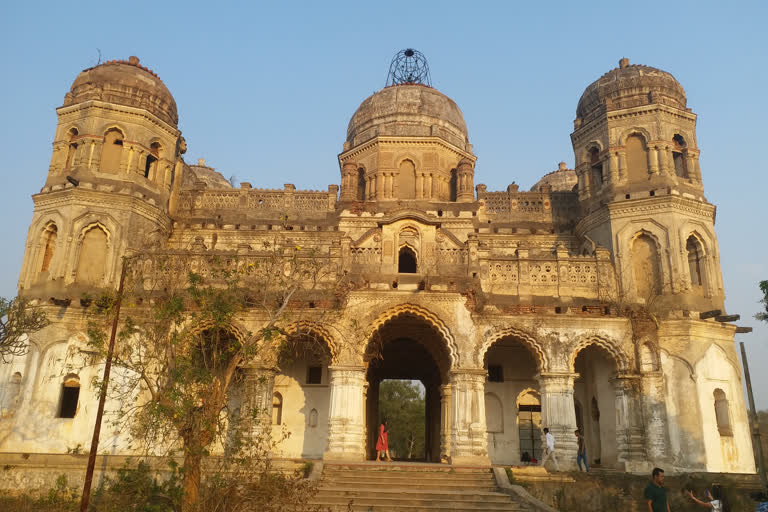Hazaribagh: The state of Jharkhand is dotted with historical buildings, sites and palaces which have their own special identity. One of these is the ancient Padma fort in Hazaribagh. This fort, which has witnessed many memorable events, is struggling for its existence today. One of the best specimens of architecture, this building is getting dilapidated with each passing day. Padma Fort, located just 22 kilometres away from Hazaribagh city, is a historical fort of the descendants of King Ram Narayan Singh. People come from far and wide to see this majestic fort. But today, this place has no king and hence no caretakers. The fort is neither as bright nor as beautiful as it used to be. It is just the memories attached with the fort, which people keep talking about.
It is said that there was a time when there used to be rows of imported vehicles and elephants, which welcomed the visitors at the door. It is said that this fort had more than 2,000 elephants, horses and infantry. Currently, a handful of villagers have been looking after its maintenance. The crown prince Saurabh Narayan Singh occasionally visits the property.
Also read: J'khand: Mahua fruit, an income booster for Latehar villagers
History of Ramgarh Raj
The foundation of Ramgarh Raj was laid in 1366 by Raja Baghdev Singh, ancestor of King of Ramgarh Kamakhya Narayan Singh and his brother Singh Dev. Raja Vasudev Singh and Singh Dev ruled from 1366 to 1403. After this, many kings including Bagdev Singh, Karate Singh, Ram Singh, Madhav Singh, Jugat Singh, Harmeet Singh, Dalit Singh, Vishnu Singh, Mukund Singh, Tej Singh and Patera Nath Singh took care of their ancestral kingly empire. Raj Bahadur Kamakhya Narayan Singh was the last king of this dynasty. It was during his tenure that our country became independent. When the country got independence, the entire Chhotanagpur area was dominated by King Kamakhya Narayan Singh. He was in reckoning until 1970. After this, King Indra Jitendra took charge of the royal family, who was the father of then MLA Saurabh Narayan Singh.
Also read: Sex racket arrests made in Jharkhand
The royal family was very close to the public
It is said about the Raj family that it was very close to the public. For this reason, even after the monarchy, in democracy, this family gave many public representatives. The political life of the Ramgarh Raj family begins with Kamakhya Narayan Singh. He was an MLA in Bihar Legislative Assembly four times. He represented Bagodar twice and Hazaribagh Sadar twice. Earlier in 1947, he was the first elected President of Hazaribagh Zila Parishad and remained in this post for 12 consecutive years.
Also read: Haryana, Jharkhand reach final of sub-junior men's hockey nationals
Congress session was held in Ramgarh
The Raj family here supported Mahatma Gandhi in the freedom struggle. Ramgarh has played its role in the historic National Congress session in Ramgarh. It announced the surrender of the statehood at the feet of Gandhiji and was crowned with the title of British Raj Bahadur.
Also read: 107-year-old woman receives COVID-19 vaccine shot in Jharkhand
Features of Padma Fort
There were 150 rooms in the Padma Fort. The palace also had a theatre. It is said that the king used to use a helicopter to move around. However, the heydays of this sprawling property seem to be over.
An 80-year-old, who has been serving this mansion for 4-5 generations, told ETV Bharat: “Our King Saurabh Narayan Singh has given us the responsibility to look after the palace. We look after this palace. He would come occasionally. He meets the people who tell him how sad they feel to see the condition of the palace. He also admits that he is feeling sad but cannot do anything as there is none to look after all this in the family now.”



